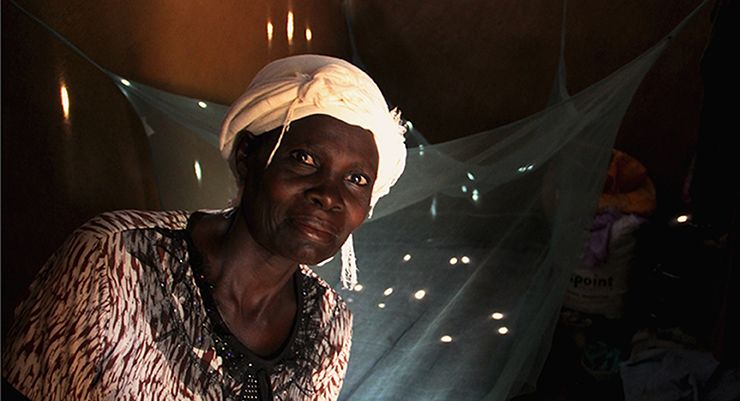World Malaria Day 2014: A Face of Courage and Hope

By Mike Smith
————————
Tiny shafts of sunlight dot the mud walls of Margaret Atieno Juma’s small bedroom—just enough to illuminate the mosquito net that was hung there a year ago. It’s been a year of unprecedented good health for this petite mother and grandmother.
I met Margaret on a visit to Opanga Village, western Kenya last month. I traveled there to meet with Episcopal Relief & Development’s partner, Anglican Church of Kenya Development Services or ADS – Nyanza, and to meet many of the people who participate in our extensive program there.
Margaret received her net and her training through ADS. The program also provides training for Community Health Extension Workers like Julieta Akinyi, another resident of the Opanga community. Julieta visits Margaret and scores of others every month or two, making sure that they are eating a balanced diet and avoiding sickness.

April 25th is World Malaria Day, the seventh time the world has marked this dubious anniversary since malaria prevention became part of the United Nations’ Millennium Development Goals. It’s the kind of anniversary that everyone would like to stop marking. Despite a virtual war against malaria by governments, NGOs, caring individuals and church groups around the globe, malaria continues to claim hundreds of thousands of lives each year.
Malaria prevention efforts have saved 3.3 million lives since 2000, according to the World Health Organization. Still, too many people are suffering. More than 600,000 die of the disease each year, most of them children under 5. Training in symptom recognition, disease prevention and the proper use of long-lasting insecticide treated bed nets are the best ways to beat malaria.

Malaria is caused by Plasmodium parasites that are transmitted exclusively through the bites of Anopheles mosquitos. Symptoms include fever, headache, chills and vomiting. Children with the disease can develop severe anemia, respiratory distress and/or cerebral malaria. Sub Saharan Africa is particularly vulnerable to malaria because the infected mosquitos there live long lives and have a strong human-biting habit, according to the World Health Organization.
Margaret told me she used to suffer bouts of malaria about two or three times a year, a frequency that I find almost unfathomable. She battled through it gamely. Sometimes, she would travel many miles to a clinic for treatment. The bed net finally made the difference, and she has learned how to protect herself from the disease. In fact, since using the net, she hasn't contracted the disease in over a year!
For me, Margaret Atieno Juma has become the face of malaria, a face of courage and hope, and a face I will never forget.
—————————————————
Mike Smith is Major Gifts Officer for Episcopal Relief & Development
Images: Top, Margaret with her mosquito net, Mike Smith. Middle, Most recent infographic on program outcomes of NetsforLife®. Bottom, Margaret, a face of courage and hope, Mike Smith.



